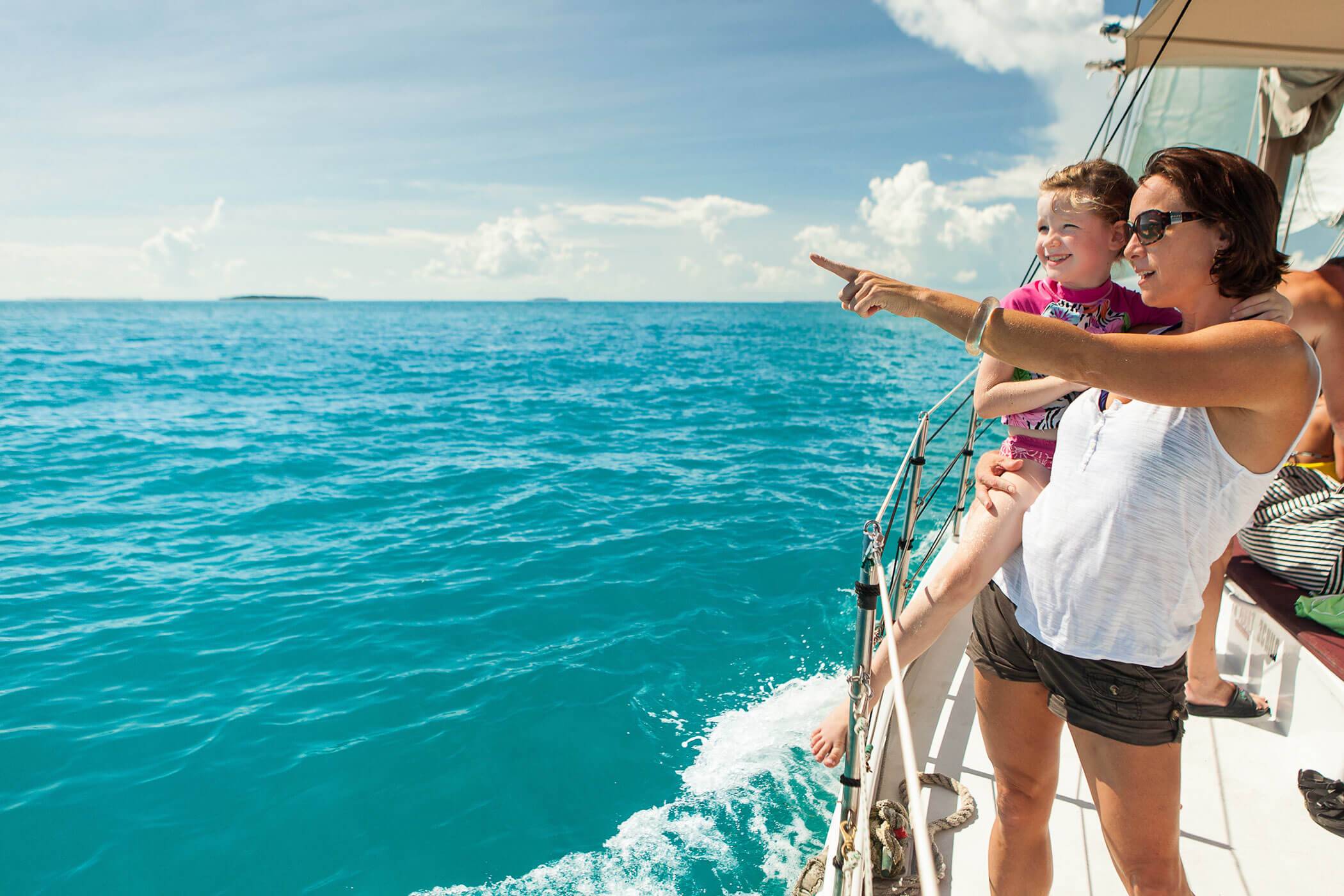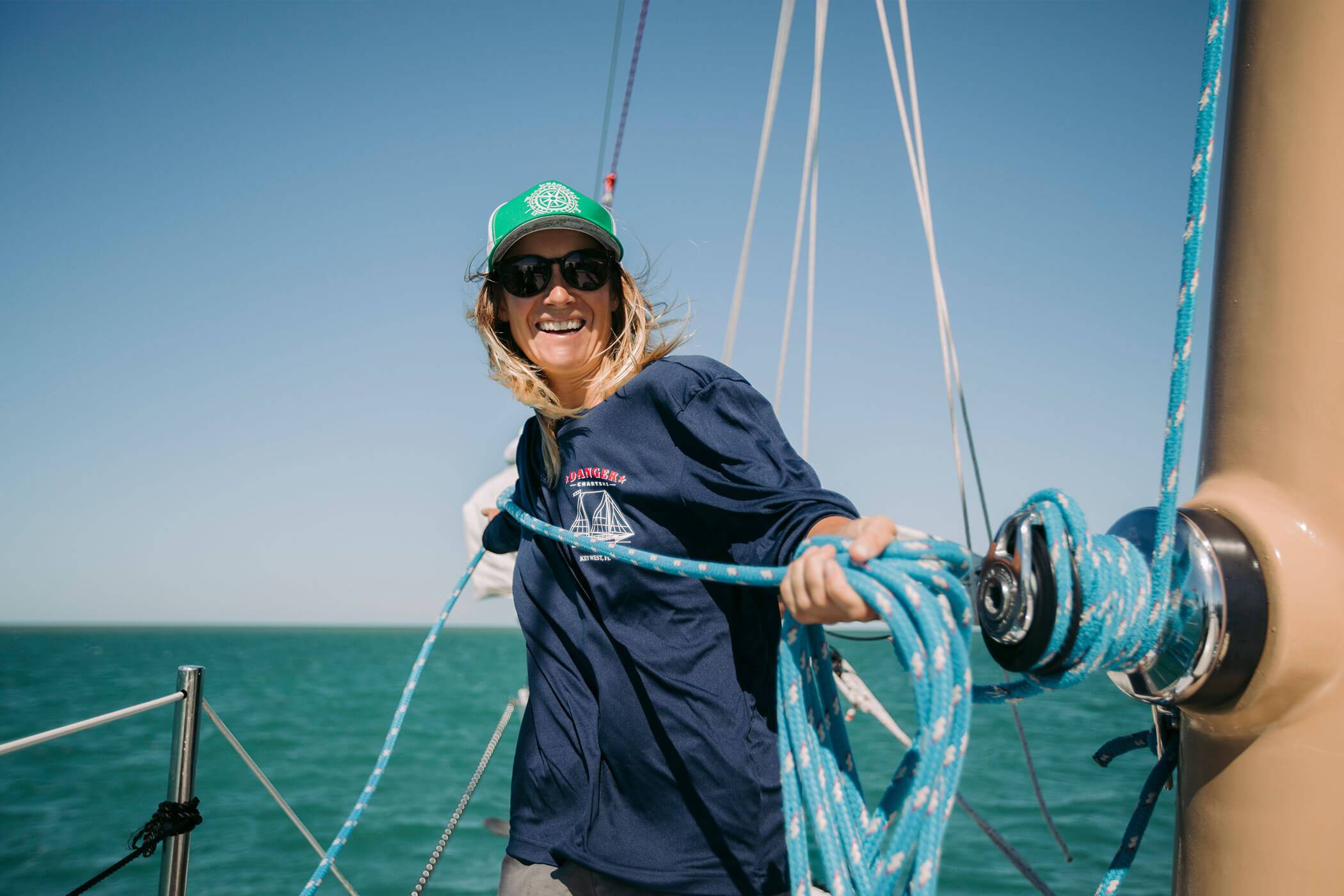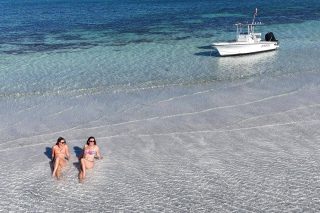What To Know About Motion Sickness When Sailing
General
Posted by: Danger Charters
9 months ago
Whether you call it motion sickness or seasickness, it’s something our guests call our office about often! And we get it, the last thing you want to experience on your amazing vacation in the Florida Keys is motion sickness! Don’t worry … we’ve got your back.
At Danger Charters, we are extremely mindful of the fact that many people suffer from – and have great anxiety about – seasickness. It’s for this reason that we are diligent about sailing in calm waters at every opportunity. It is extremely unusual for folks to get seasick while on charter with us, but of course, it’s not impossible. In this article, we’ll address all things seasickness, from why people get seasick and the symptoms you might experience, to how to prevent motion sickness and cope with it if it overtakes you.

What Is Motion Sickness?
We humans interpret an enormous amount of information as we navigate through the world and, generally speaking, we get around with ease. When we’re out of our element, though, we can find ourselves in a state of information overload and feel a little green around the gills.
Motion sickness – car sickness, air sickness, and seasickness – stems from system overwhelm. And you don’t even have to be in a real car or on a plane, boat, or roller coaster, it can be a simulator! Why? Because your inner ear, which is responsible for balance, as well as your eyes, muscles, and joints send mixed messages to your brain, and you become disoriented. In trying to decode a mess of conflicting information, you lose your grip on what’s what, unable to decipher if you’re stationary or in motion.
Fortunately, your body sends pretty clear signals that something is amiss. If you’re paying close enough attention, you can often regain control.
Motion Sickness Symptoms
Alarm bells are never pleasant. Motion sickness symptoms vary in severity and can be influenced by several factors. Women and children ages 2 to 12 are among the most likely to experience symptoms of motion sickness. Those who have a family history of motion sickness, are pregnant or take hormonal birth control, or have chronic inner ear issues are also more susceptible.
Motion sickness symptoms include:
- Headache
- Dizziness
- Clammy skin, cold sweats
- Pale skin
- Inability to concentrate
- Rapid breathing or gulping for air
- Increased saliva, nausea, and vomiting
- Irritability
- Fatigue

Before You Sail: Preparation Tips
Let’s talk about how not to get seasick! If you anticipate feeling queasy, the very best motion sickness medicine is prevention. Some know from experience that motion sickness pills and remedies will be their only way to feel well, but others can simply rely on good, old-fashioned common sense.
1. Stay Hydrated
Dehydration is a significant contributor to symptoms of seasickness. Drink plenty of water ahead of your sail, and remember to continue hydrating while on charter – especially in the heat. Plan to skip the alcohol until we’re underway or, if you’re on a Sail, Snorkel and Kayak tour, after watersports. We have plenty of alcohol on board for when you feel up to it.
2. Avoid Heavy Meals
Having too much in your belly is a major trigger for seasickness. Plan to eat normally on the day of your sail. Don’t overindulge before your “big trip” – stay away from heavy, greasy, spicy, or acidic foods – but don’t skimp on sustenance for fear you’ll bring it back up, either. Eat sensible food that will serve as fuel.
3. Sea Sickness Medicine
There is no shortage of motion sickness pills and patches online, and prescription drugs are on the market as well. Be mindful that some pills and patches cause drowsiness, dry mouth, and blurry vision.
- Seasickness Pills
- The most common motion sickness pills over the counter are Dramamine (Dimenhydrinate) and Bonine (Meclizine). The Bonine vs Dramamine question is one we get often. Both are effective, but Bonine is taken once a day and Dramamine is taken every four to eight hours. When to take Dramamine is important to plan out – about 30 minutes before boarding seems to be the best advice.
- Motion Sickness Patches
- While there are several seasickness patches available online, we’re told that the most effective are prescription strength. You often see cruise ship passengers wearing these patches behind their ears. Applied ahead of coming aboard, motion sickness patches are said to be effective for three days.
4. Natural Remedies for Motion Sickness
Mother Nature offers some great seasickness remedies that are easy to come by. Down in the Keys, you can find many options in our grocery stores.
- Hard Candy
- Peppermint, ginger, and sour-tasting sweets can give quick nausea relief. Tuck some hard candies in your bag in case the feeling strikes. Drinking real-deal ginger ale can help too.
- Aromatherapy
- Aromatherapy is an underestimated way to prevent seasickness. Pack some lavender, peppermint, or ginger essential oil, or consider putting some on your towel before boarding.
- Motion Sickness Bands
- Acupressure wristbands are not as strong as medication, but they do offer significant relief without the side effects of seasickness medicine.

During the Sail: On-Board Tips
Feeling iffy once we’re underway is no fun. Try a few of these techniques to keep your seasickness at bay.
1. Take Your Position
Find a spot on board where you’re less aware of the motion of the ocean. In most cases, this will be in the front or center of the vessel. Avoid sitting toward the back of the boat, and don’t face backward.
2. Focus on the Horizon
Releasing everything – even your vacation-ready book – and staring off into the distance is a great way to settle your tummy. By gazing at the horizon or a single object, you minimize the amount of stimulation to your brain. Laying down is very helpful too.
3. Communicate
If you are worried about getting seasick, or feel seasickness symptoms coming on, tell someone. Just letting a crew member know to keep an eye on you will take some anxiety out of the equation and – if you do need seasickness relief – they’ll be ready to come to your aid.
4. Trust Your Crew
Remind yourself that you are in great hands. The Danger Charters crew is made up of highly-trained, seasoned folks who have sailed through calm waters as well as rough seas. They know what they are doing.
Coping Strategies if Motion Sickness Occurs
You don’t have to lean into the suffering – there are some things you can do to ease your discomfort and anxiety of seasickness.
1. Breathe Deeply
Take slow, deliberate breaths. Breathing rapidly may cause you to hyperventilate, which will make you feel worse. You want to calmly face into the wind and breathe, taking in the fresh, clean air. In through the nose; out through the mouth. Try to keep calm.
2. Eat a Snack
Having some sensible nibbles can help your stomach get back to what it was built for: digestion. Kick those butterflies to the curb!
3. Drink Water
Drink some water, or better yet, some electrolytes if available. As previously mentioned, dehydration is a major culprit when it comes to seasickness.
4. Distract Yourself
Strike up a conversation with your sailing companions (about anything other than seasickness!), make friends with folks on board, or engage in some Key West nature or history talk with the crew. The distraction will help your brain focus on something other than that icky feeling.
Charter-Specific Advice
Danger Charters sails out of two marinas – and the sunsets are glorious from both. Excursions that explore the West Coast of the island, including trips to the Backcountry, depart from Danger Chandlery Store at Opal Key Resort and Marina. On these trips, you’re likely to only experience calm water.
Our Stock Island trips depart from the Perry Marina. The water on this side of Key West is typically calm, but we’re more likely to encounter a few waves on this side of the island.
Remember, sitting in the middle of the boat is advised until you get your sea legs under you, and we sell Sea bands and seasickness pills in the Danger Chandlery Store should you need a little help. Of course, we know all about sailing, but we’re not medical professionals. If you have severe motion sickness or are unsure of what’s safe for you to take for seasickness, talk with your doctor before booking your trip.
Have questions? Check out our FAQs or give us a call – we can’t wait to welcome you aboard. Wishing you fair winds and following seas!





